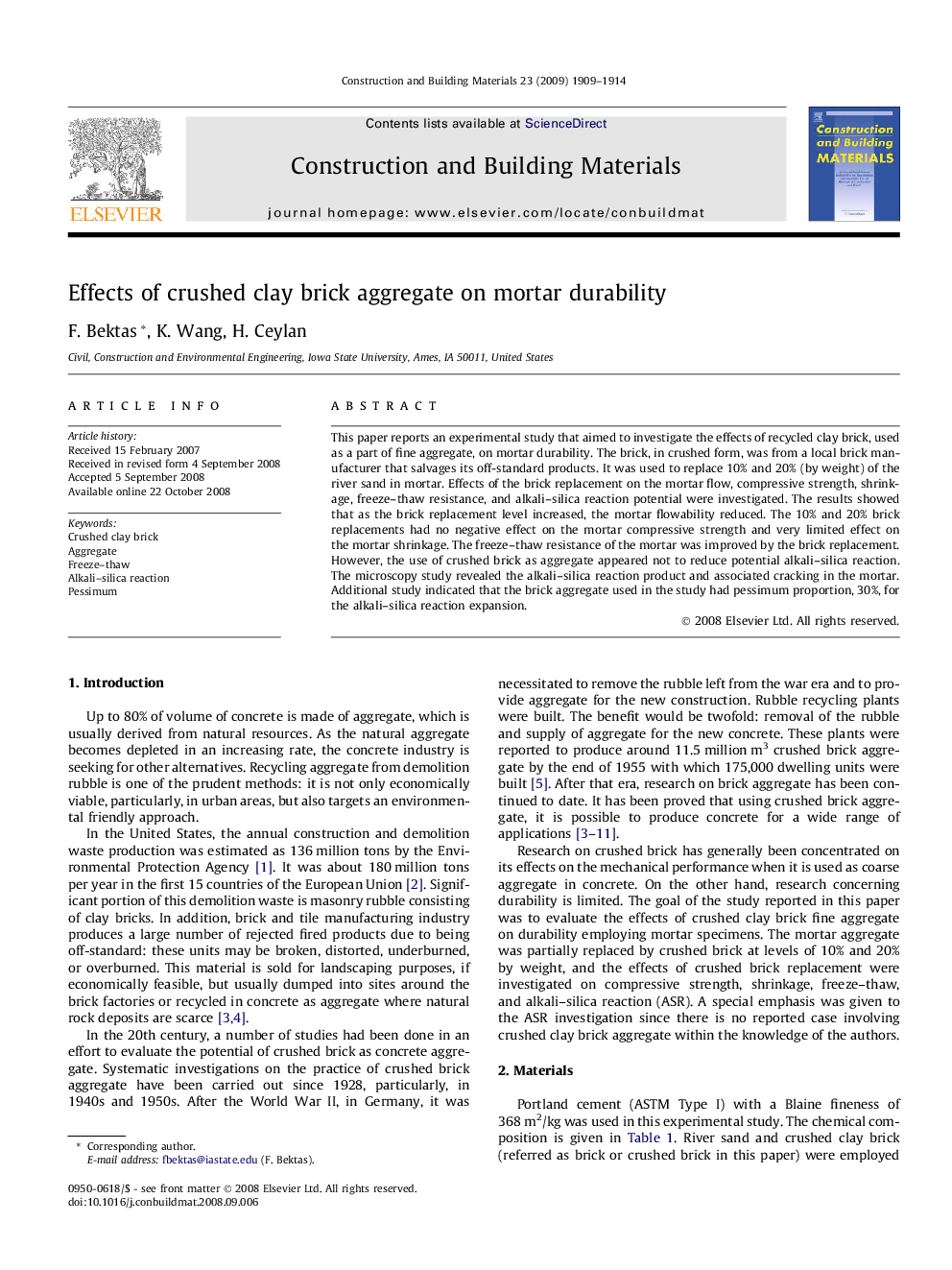| Article ID | Journal | Published Year | Pages | File Type |
|---|---|---|---|---|
| 260735 | Construction and Building Materials | 2009 | 6 Pages |
This paper reports an experimental study that aimed to investigate the effects of recycled clay brick, used as a part of fine aggregate, on mortar durability. The brick, in crushed form, was from a local brick manufacturer that salvages its off-standard products. It was used to replace 10% and 20% (by weight) of the river sand in mortar. Effects of the brick replacement on the mortar flow, compressive strength, shrinkage, freeze–thaw resistance, and alkali–silica reaction potential were investigated. The results showed that as the brick replacement level increased, the mortar flowability reduced. The 10% and 20% brick replacements had no negative effect on the mortar compressive strength and very limited effect on the mortar shrinkage. The freeze–thaw resistance of the mortar was improved by the brick replacement. However, the use of crushed brick as aggregate appeared not to reduce potential alkali–silica reaction. The microscopy study revealed the alkali–silica reaction product and associated cracking in the mortar. Additional study indicated that the brick aggregate used in the study had pessimum proportion, 30%, for the alkali–silica reaction expansion.
